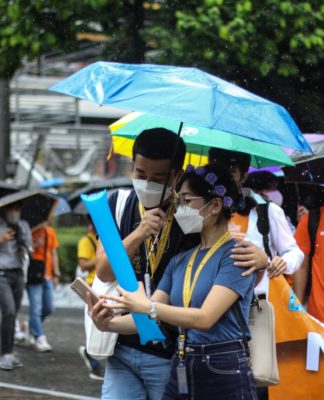TWO NEW degree programs in the Faculty of Arts and Letters (Artlets) attracted a total of 94 students, a number higher than what officials had expected.
The AB in English Language Studies had 59 pioneer students at the start of the academic year, while AB in History had 35 freshmen.
“[Artlets] belong to the liberal arts, [and] I cannot imagine a liberal arts college without language courses and a history course,” said Artlets Dean Michael Anthony Vasco. “History and English Language Studies are mainstream liberal arts and humanities disciplines.”
Since the University offers post-graduate degrees in history and English, Vasco said it was appropriate to put up undergraduate programs.
“We can [directly] claim that our language and history programs are ladderized,” he said.
Artlets was expecting only 45 students for the English Language Studies program but more students chose to reserve slots and enroll.
English Department chair Marilu Madrunio said the new language program is a revision of the traditional AB in English course, which combines literature and language.
“UST is the first institution to offer the AB [in] English Language Studies program. As a member of the Commission on Higher Education technical panel for the English language, we decided to come up with [new] programs geared towards teaching language education,” Madrunio said.
Next semester, students will be lectured by a visiting American professor, called an “English language fellow,” for them to be exposed to a native speaker of the language, she said.
Meanwhile, History Department chair Augusto de Viana said the number of enrollees in AB in History was ideal because professors can devote more attention to each student.
“I told the professors to teach well and never allow the program to ‘die’ because the honor of the department and the University are at stake,” he said. “This University is the home of great historians coming from Gregorio Zaide up to William Henry Scott, and now we are producing another generation of historians, hopefully, from this batch.”
De Viana shared some plans set for the “research-intensive” course.
“We are planning to set up a separate historical society,” he said. “We are also planning to hold history seminars and lectures as a part of history week on September this year,” he said.
Vasco said the inclusion of the History course may “elevate” the ranking of the University in the Arts and Humanities category of the Quacquarelli Symonds (QS) ranking of top Asian universities.
QS surveyed six programs that they consider as arts and humanities courses.
“During the previous years, out of the six programs, Arts and Letters only offered two,” Vasco said. “Hopefully, we will fare better in the coming years in the ranking for we now have four out of six.” Reden D. Madrid and Bernadette D. Nicolas

















AB admin must set a boundary between Asian Studies and History. As an Asian Studies alumnus, most of the subjects during my time were taught in historical perspective- neglecting foreign relations, economics, sociology and political economy which are vital in teaching area studies. The new course must set that delineation to focus primarily on what?
Perhaps, it is easier to set a curriculum to history and we may leave as it is but the the complicated Asian Studies must be revised and reflect contemporary, case studies and add stand alone subjects in development administration or intensify foreign relations discussions